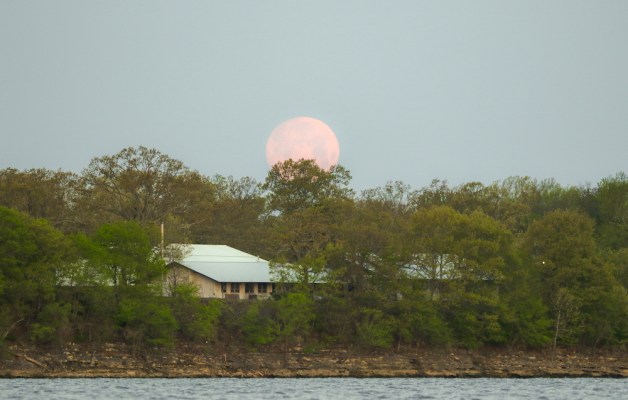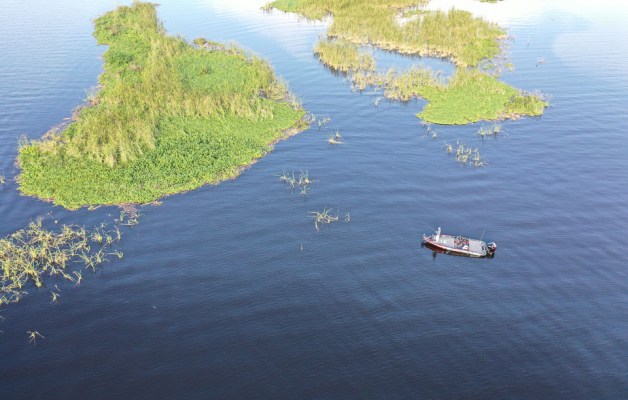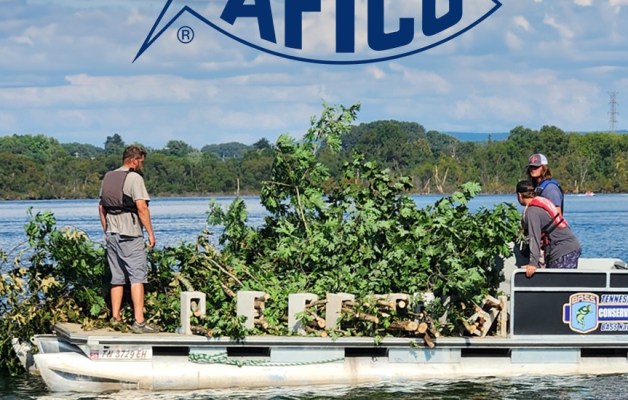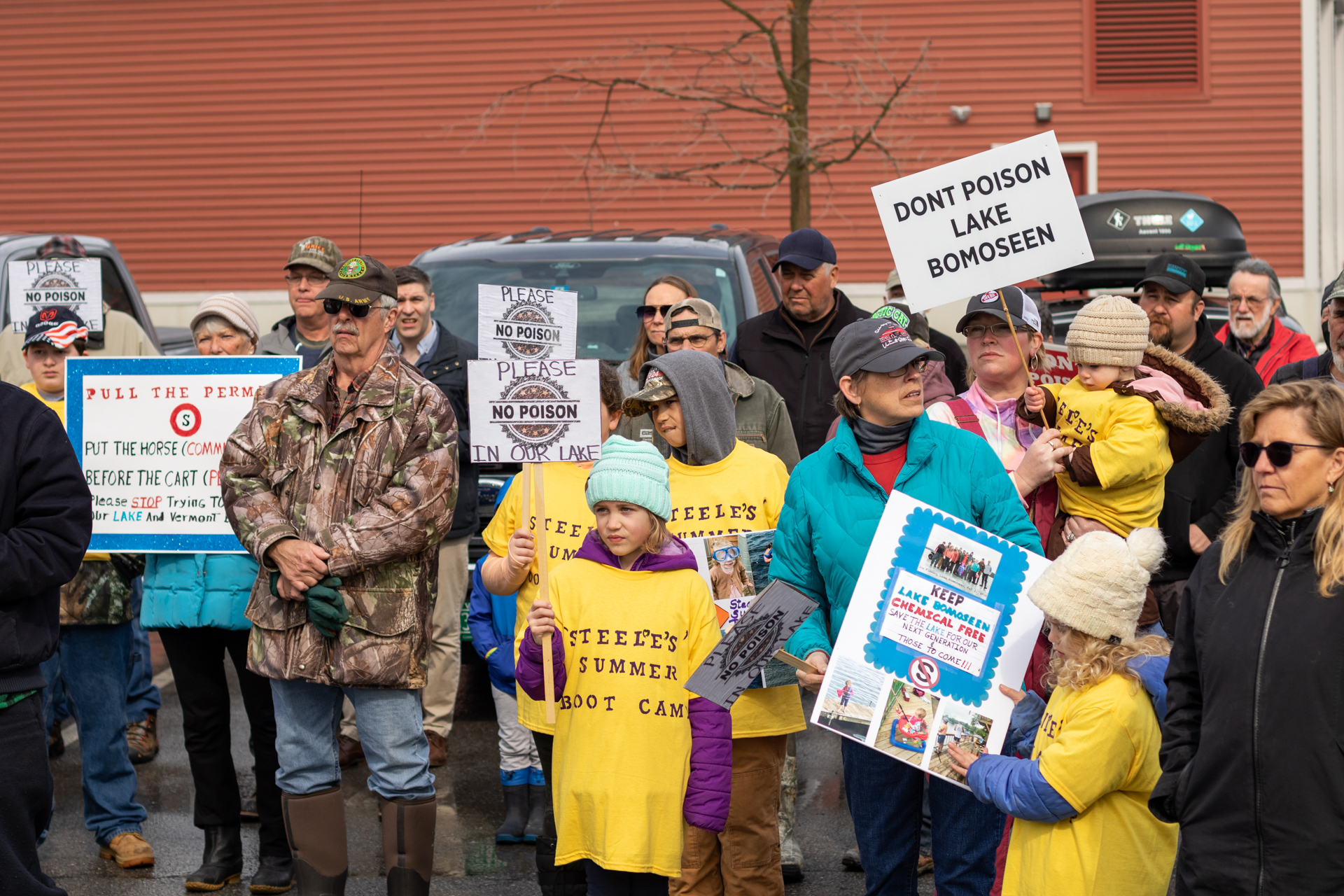
CASTLETON, Vt. — Angler activism may have saved Lake Bomoseen from an unpopular and unnecessary herbicide treatment that could have had devastating consequences for one of Vermont’s best bass fisheries.
“I think that the earliest the state would make a final decision would be later this spring or early summer,” said Jody White, who helped initiate an online petition against the Lake Bomoseen Association’s (LBA) request for a permit to treat Eurasian watermilfoil in the lakewith the herbicide ProcellaCOR.
As of early May, the petition had more than 1,700 signatures. Additionally, a “Don’t Poison Lake Bomoseen” Facebook page has 1,000 followers. A rally against herbicide treatment drew an estimated 100 to 200 people on March 6.
And B.A.S.S. member and guide Matthew Trombley said the governor’s office has been “bombarded with calls” from those who oppose treatment for the non-native plant that has been established in the 2,400-acre lake and other Vermont fisheries for 40 years or more.
“Our mission is succeeding,” Trombley added. “I feel this permit (request) will not fly. And if towns around the lake don’t support it, this will be a public relations nightmare for the association.”
Fair Haven and Hubbardton voiced their opposition in early spring, the guide said, two days before he and 11 others were to testify against the LBA’s application for a permit at the Department of Environmental Conservation (DEC) in Montpelier. On May 9, the town of Castleton made it unanimous.
“It was a very short meeting. Fifteen minutes was allowed on the docket, but it was a quick 5-0 vote against,” said Erik Rasmussen, conservation director for The Rutland BASS Club, which claims Lake Bomoseen as its home waters and has been at the forefront of local opposition to the use of herbicide.
“What that means is that, as a town, Castleton will tell DEC it doesn’t want this,” he added.
In addition to speaking at public meetings, members of Rasmussen’s club have sent multiple letters of opposition not only to DEC and LBA, but to area media, the governor and the Lake Bomoseen Preservation Trust.
It also has proposed to LBA that a committee be formed consisting not only of LBA members, but community residents and businesses. “The Rutland BASS club would be excited to be involved with you in this endeavor,” the Rasmussen said.
Problems such a keeping boat lanes open and water clear around docks can be solved without use of herbicide, he added.
“I would rather see the state subsidize lake mats (to prevent growth around docks) for the property owners who would like them,” he said. “This solution is cost-effective, doesn’t impact Vermonters as much, and seems like a reasonable way to meet in the middle.”
Meanwhile, White pointed out that many besides anglers are opposed to the use of herbicide,
“You’ve got parents and grandparents whose kids swim in the lake, birders, Progressives, Democrats and Republicans, all lined up to keep herbicide out of the lake. It’s driven home to me how important a diverse coalition is. Bass anglers alone wouldn’t have done as much as we have so far.”
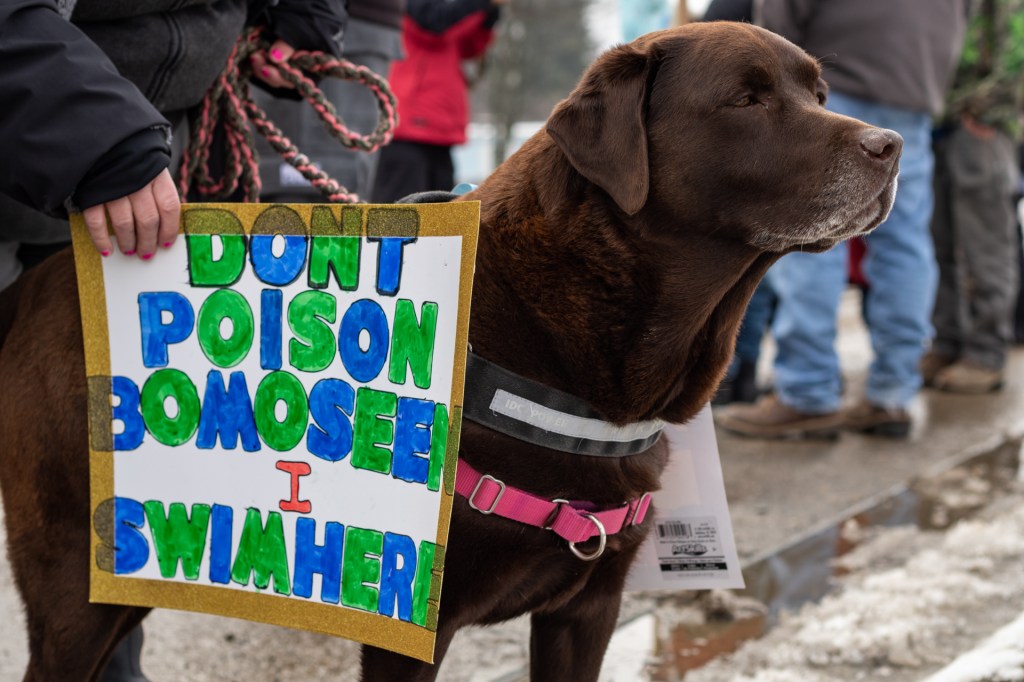
For anglers though, their intense opposition is fueled by the fact that the milfoil is largely responsible for Bomoseen being such a good largemouth fishery, where a five-fish bag can weigh 20 pounds or more. Add to that, they say, its coverage has not increased over the years because of the lake’s topography and it is not causing problems for swimmers or boaters.
About 30% of the lake is less than 20 feet deep, so that allows for about 700 acres where weeds can grow, explained Trombley, who added that vegetation is a combination of milfoil and native plants.
“Our aquatic life is accustomed to it (milfoil),” he said. “It’s listed as an invasive by the state, but it’s been here a long time. And only a small percentage of our weed growth is milfoil.”
“You take away the habitat, and the baitfish struggle. Then the bass struggle. We’ve seen it on other lakes where herbicides were used on the milfoil.”
Water quality is yet another concern. “Lake Champlain is the southernmost water outlet of this lake and Vermont has spent millions to promote it as chemical free,” he added. “Tourism is huge to our state and fishing is a big part of it. If this permit is approved, we stand to lose on this.”
Vermont B.A.S.S. Nation President Jason Betourney said, “Why would we want to put a chemical in our lakes and later down the road discover there is some issue that our children will have to deal with it?”
Why, then, would members of the LBA pursue a strategy that could potentially hurt the fishery, damage water quality, and diminish tourism? Some of the more cynical in the coalition opposing the permit say that members had little input and the effort to eradicate milfoil was pushed by some on the association board. The latter, they say, were fearful that plants around their docks would lower property values.
Indeed, Trombley said they tried to push permit approval through the Department of Environmental Conservation (DEC) without public knowledge.
“They said that they notified members of the association,” he said. “But many received no notice and had no vote.”
And White added, “My ideal outcome is that we get the state to deny the permit application, and then use the momentum for legislation that would ban or really restrict herbicide use in Vermont.
“That said, the state has issued several permits for this herbicide in the recent past, so the DEC isn’t for sure on our side on this. Then again, there really has never been this amount of opposition to a herbicide permit in Vermont before.”
Trombley concluded, “This really has opened up a Pandora’s Box about the use of chemicals in Vermont waters. We’re really hopeful now that this permit will not move forward.”
LINKS
Don’t Poison Lake Bomoseen
Keep Lake Bomoseen Chemical-Free



